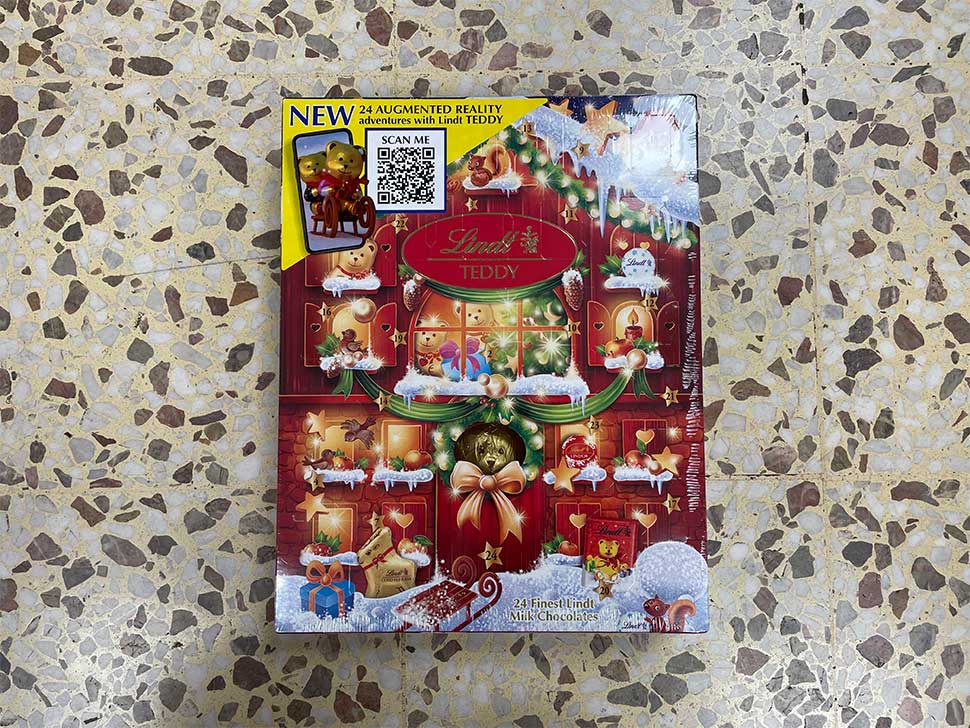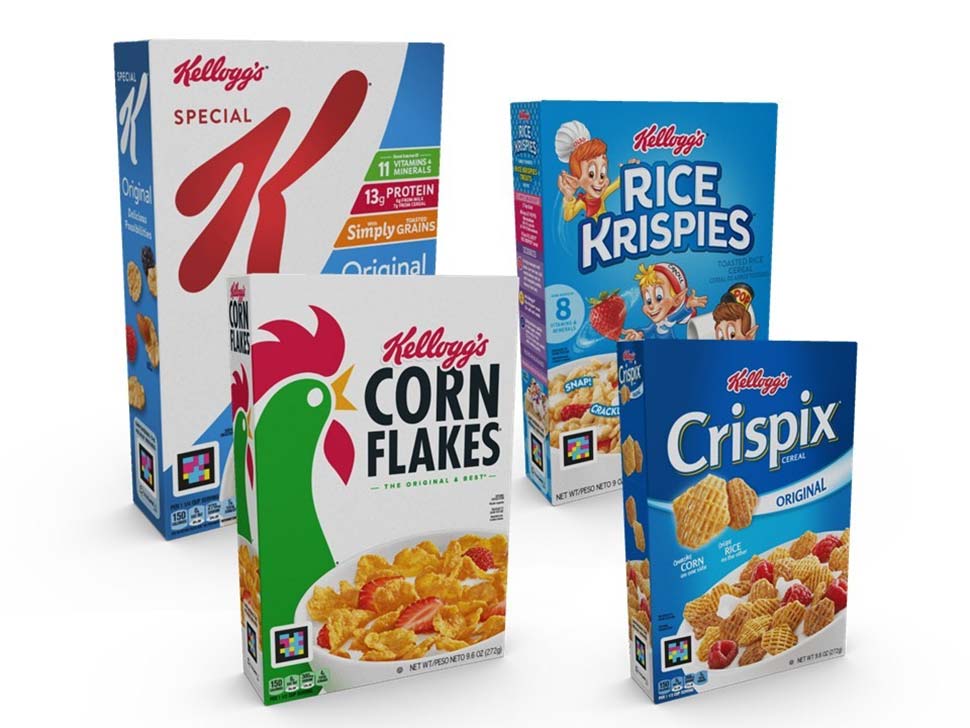An increasing number of brands are including some form of interactivity in their marketing as a way of connecting with consumers. This is certainly true for print media, with interactivity fast becoming a common feature on packaging, posters and even business cards. But is it really worth it and how much value does it actually bring? LFR investigates…
To start, interaction in print is by no means a new initiative. Companies, marketers and brands have been including features such as QR codes on printed materials for some time now, offering the consumer the opportunity to find out more about a product or service without having to actually Google it themselves.
However, what has been interesting to monitor is exactly how technologies like QR codes are being used to bring added value to printed pieces. This may be something as simple as a QR code on printed packaging; rather than directing the consumer to a dull page of text, it instead leads them to all sorts of interesting, additional content to improve the overall experience of the product or service in question.
Of course, we have seen QR codes expand into the digital world, with adverts on television and digital signage now carrying QR codes that consumers can scan to unlock extra content. But it is within the print sector where this form of interactivity seems to have come on the most.
However, the question remains – what is the real value of this interaction? Is it just a way of shovelling more information down the throat of the consumer, or, if it is more than that, what exactly can printers achieve in partnership with their own clients? How can printers and brands continue to push the boundaries of what is possible with this interaction?
Opening a pathway to new opportunities
Perhaps the best way of evaluating how far this sector has come is by looking at some of the most recent examples of interaction with print. At the time of writing, supermarket shelves are stacked full of Christmas goodies, which bring with them a range of interactive features to help spread festive cheer.
Picking out one example that caught the eye, world famous chocolatier Lindt has released a special edition advent calendar that offers all the fun and tastiness of a traditional Christmas countdown, with the added benefit of interaction with the consumer by using augmented reality (AR).
Consumers are invited to scan the QR code with their mobile device and gain access to extra content, featuring everything from sleigh rides across snowy landscapes, snowball fights and even the ability to decorate your own festive gingerbread biscuits. Those that purchase the calendar can enjoy 24 fun activities – one for each window of the chocolate advent calendar – as they count down the days until Christmas.
Of course, none of this additional content is print-based and will not bring any additional work to the industry. However, what it does do is serve as an excellent example of print and digital technologies being combined to offer; it allows printing companies to say to brands: “Look what we can help you achieve with a simple QR code!”
It can also be argued that adding this level of interactivity warrants a higher purchase price. Lindt is often more expensive than your standard chocolate, but at a RRP price of £12, the calendar will set consumers back much more than standard calendars that can be priced as low as £1 but offer little in terms of added value in the form of AR.
AR without the QR
If we are being really picky, one might say that black and white QR codes can be a little unsightly. As much as we admire the Lindt calendar, it is not ideal to have a large monochrome block on the front of an otherwise colourful and attractive piece. Yes, it certainly draws the eye of the consumer and directs them to the content, but it is not the prettiest design in the world.

The good news for those of a similar, nit-picky nature is that technologies are now emerging whereby digital interactivity can be added to printed products without the need for QR codes. One example of this is Displai, a company that uses AR and smartphone technology to activate realistic experiences, seemingly bringing packaging to life in front of the consumer.
So, how does this work? In essence, it is the same as QR codes; consumers scan packaging with their smartphone to activate an AR overlay. This can be used for functions such as to present information, animate packaging, add clickable links and make holograms appear.
The technology makes use of prefabricated layouts, with brands simply having to upload the image they want consumers to scan and Displai doing the rest by adding AR capabilities before it is printed onto the packaging.
“Displai provides a framework for marketers to produce stunning, content rich experiences,” Displai said on its website. “With multiple layers of content, displayed in many ways, and linking to lead the journey."
Displai Co-Founder added: “This is the first truly accessible solution for product packaging. The platform makes it easy for brands to add virtual experiences to their products, which consumers activate with their smartphones. It can be setup and activated across millions of products in days and will even work with products currently in the supermarkets and sitting on kitchen shelves in homes.
“People are amazed. The product they’re holding in their hands is coming to life – animating, becoming interactive. It’s fascinating. You can see people's responses – their jaws literally drop.”
Breakfast of champions
While this sort of technology is often used to expand the customer experience with products and make more noise about a brand, it can also be used in a highly functional and, arguably, a more important way that transforms the way people shop – especially those with certain conditions.
Step forward Kellogg Company, which linked up with NaviLens to integrate technology into its printed, cardboard cereal boxes in the US to help blind people and those with low vision find the products they wanted on supermarket shelves.
NaviLens is, to an extent, similar to a QR code in that it is a printed code that can be scanned with a smartphone camera and a free app to access more information about an item. Where this differs to standard QR codes is that the NaviLens code is comprised of high-contrasting, coloured squares on a black background. Also, unlike with QR codes, users do not need to know exactly where a tag is to be able to read it – making it an ideal solution for initiatives such as the joint project with Kellogg’s.

Kellogg’s added a NaviLens optical smart code to a number of its most popular cereal brands in the US. This allowed consumers to locate the boxes from several feet away, navigate to them, and hear their names, package sizes, and nutritional information. This extends even further given that the NaviLens app can communicate this information in up to 36 languages.
In addition, Kellogg’s has committed to incorporating NaviLens codes in all corporate facilities in the US by the end of 2023, helping make them more accessible and easier to navigate for blind and low-vision employees.
“We work hard to think outside the box to ensure our products are accessible to as many people as possible,” Kellogg Company’s Chief Brand and Advanced Analytics Officer Charisse Hughes said. “Thanks to the hard work of our cross-functional teams, we’re able to adapt and leverage this technology to ensure we're living by our purpose – to create a place at the table for everyone.”
Work of art
While most examples of interactivity in print come from within the packaging sector as brands seek out new ways to connect with the consumers and raise awareness of the products and services, we are starting to see cases where these technologies are being utilised in other areas to offer new experiences to people.
Back in the spring of 2021, Canadian graphics production and installation company Premier Graphics partnered with artist Jessica Angel to produce a highly innovative art display featuring AR technology.
The aim was to bring to life Angel’s vision of mixing colourful graphics with AR to ‘extend' the Cambie Street Bridge in Vancouver into a 19,000sq ft public art installation for the Vancouver Biennale exhibition. Angel's design featured a two-dimensional vinyl mural that wrapped the pedestrian walkway, supporting columns and underside of on the bridge, turning a relatively dull structure into an eye-catching piece of art.
While attractive and eye-catching enough as a standard graphics project, AR took the installation a step further. Passers-by were encouraged to download the Vancouver Biennale app for free and hold up their phone while walking through the walkway. This opened a whole new dimension, seemingly bringing the graphics to life around pedestrians as they walked through the installation.
Premier Graphics also worked with approved Drytac distributor ND Graphics, using several Drytac products to complete the piece. These included Drytac Polar Grip white polymeric self-adhesive film for the printed film parts of the installation, Drytac Interlam Pro Emerytex PVC overlaminating film for the floor graphics and Drytac Interlam Pro Matte pressure sensitive overlaminating film for the pillars and ceiling. All the graphics were printed on the company's HP Latex R1000 Plus.
Taylor Sellinger, Partner and General Manager of Premier Graphics, said: “The virtual reality experience developed is amazing when paired with the graphics. It’s certainly the most impressive piece I’ve been involved with so far.”
These closing comments offer an apt conclusion; interactivity in print is hugely exciting. We are all aware of the capabilities of digital technology and what this offers to brands and marketers in terms of what they can achieve. However, there is no reason why traditional print cannot be combined with these digital technologies to produce something very special, with the examples featured here just a small insight into what might be possible in the years ahead.
By Rob Fletcher





